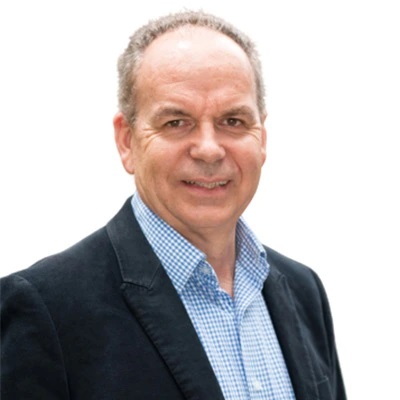Stephen Marshall MAusIMM to deliver processing improvement insights at IMARC 2023
This year's International Mining and Resources Conference and Expo (IMARC) will be held in Sydney from 31 Oct – 2 Nov.
As Australia’s largest mining event, IMARC brings together more than 8,500 decision makers, mining leaders, policy makers, investors, innovators and educators from over 110 countries for three days of learning, deal-making and unparalleled networking.

We spoke with Stephen Marshall MAusIMM, Director - New Technology at Weir Minerals, to get an insight into his upcoming presentation on processing improvements.
Your presentation at IMARC 2023 is titled ‘Sustainable Solutions for Processing Improvement’. What are you planning to highlight?
I’m planning to highlight technologies incorporated into a transformational flowsheet which promises energy savings of up to 40 per cent in comminution. This is significant, because up to three per cent of global electricity production is consumed in mining comminution processes. Therefore, even small savings in comminution energy efficiency can make a big difference in carbon footprint. Clearly, 40 per cent is not a small change, so the potential for variations of this flowsheet to impact greenhouse gas emissions globally is enormous.
I’m also planning to highlight several cost-effective tailings process solutions that enable useful reduction in the volume of tailings that need to be stored in dams. These solutions offer real opportunities for reduced risk and capacity extension in tailings storage, and more water recovery for re-use in the process plant.
What new approaches or technologies are currently shaping the future of mineral processing? Are there any exciting breakthroughs?
On the one hand, several 'hard' technologies widely used in parallel industries are starting to be deployed in mainstream mineral processing; for example, High Pressure Grinding Rolls (HPGR) and Vertical Roller Mills (VRM) that are standard in the cement industry, and stirred media mills, which are commonplace in industrial minerals processing. These are exciting developments because they reflect a growing trend of miners actively looking for efficient solutions outside of their own ecosystem, and that is a very welcome evolution for mining.
The other source of excitement for our industry is the advent of digital twins and the increasingly widespread deployment of digital technology. We are seeing this already in the mining space with autonomous vehicles and underground equipment; however, uptake has been relatively slow in the fixed plant processing space. That is starting to change and the opportunities to bring big data analysis, new sources of data from increasingly sophisticated sensors and using this data to create accurate digital twins has the potential to improve overall processing efficiency by a big margin. How big remains an open question, but I think 10-20 per cent improvement in energy efficiency for the end-to-end process plant is possible with these digital solutions.
You are also taking part in a panel discussion on ‘How can Tailings Become an Emerging Market Opportunity?’ How might embracing circular economy principals help the resources sector achieve more sustainable outcomes?
Tailings as a resource is the first thing that springs to mind. It’s amazing that the quantity of sand and aggregate generated for road and building construction globally roughly matches the quantity of tailings generated by the mining industry. Why do we need to process such vast tonnages in two entirely separate industries when there is likely commonality between the two? Surely, there is a significant component of mine tailings that can replace current demand, at least for construction sand, outside of mining. This is where the mining industry needs to explore and embrace external partnerships to fully evaluate this kind of potential and convert what is currently seen entirely as a cost burden into something of value for someone else. Trash to treasure, so to speak.
Another aspect of tailings is that much of it still contains value as metal or mineral content. While processing tailings to extract that value does not address tailings storage challenges as such, it does provide a potential low-energy path to maximising utilisation of a miner’s ore body. Yes, this may require innovative extraction techniques, but I see that as well within the wheelhouse of currently available technologies and a genuine opportunity for increasing the sustainability of mining.
What are you most excited to discuss and learn about at IMARC?
I’m looking forward to hearing about sustainable solutions that others are thinking about, developing, or have implemented across the industry.
I’m also really interested to learn the state of mind of operators now and how much they are embracing sustainability as a goal. Additionally, what steps are being taken to align operational goals with sustainability goals and how are companies addressing that challenge.